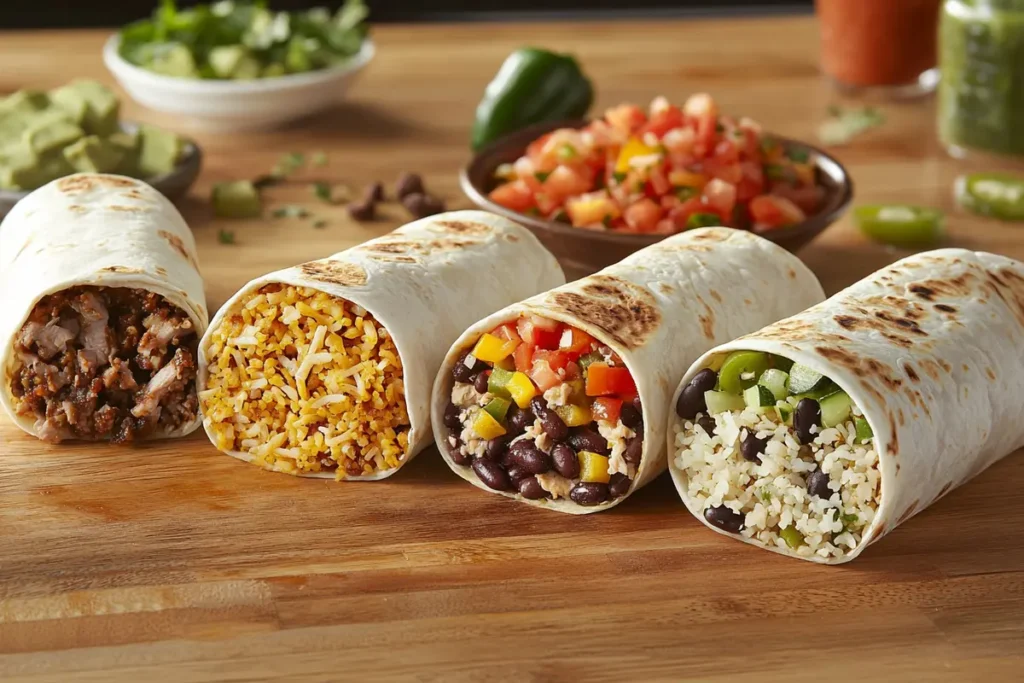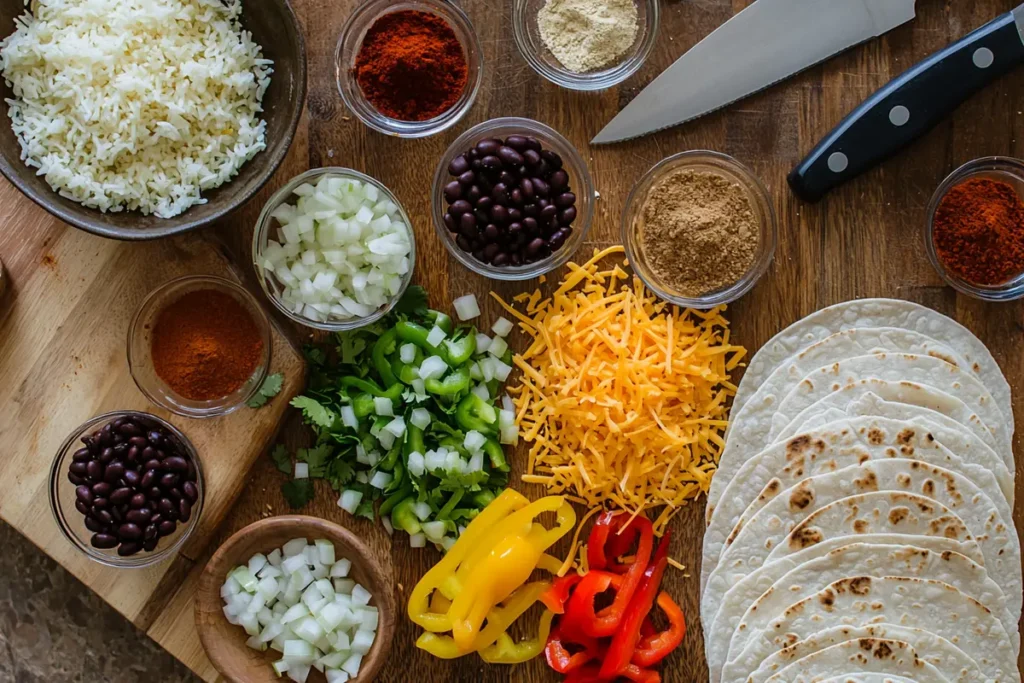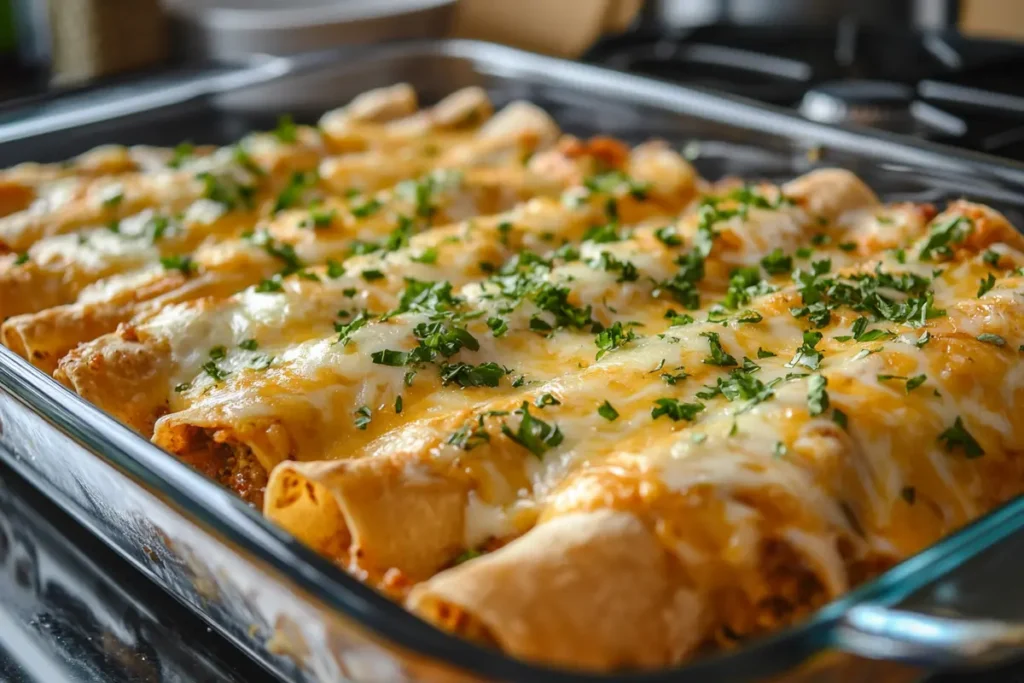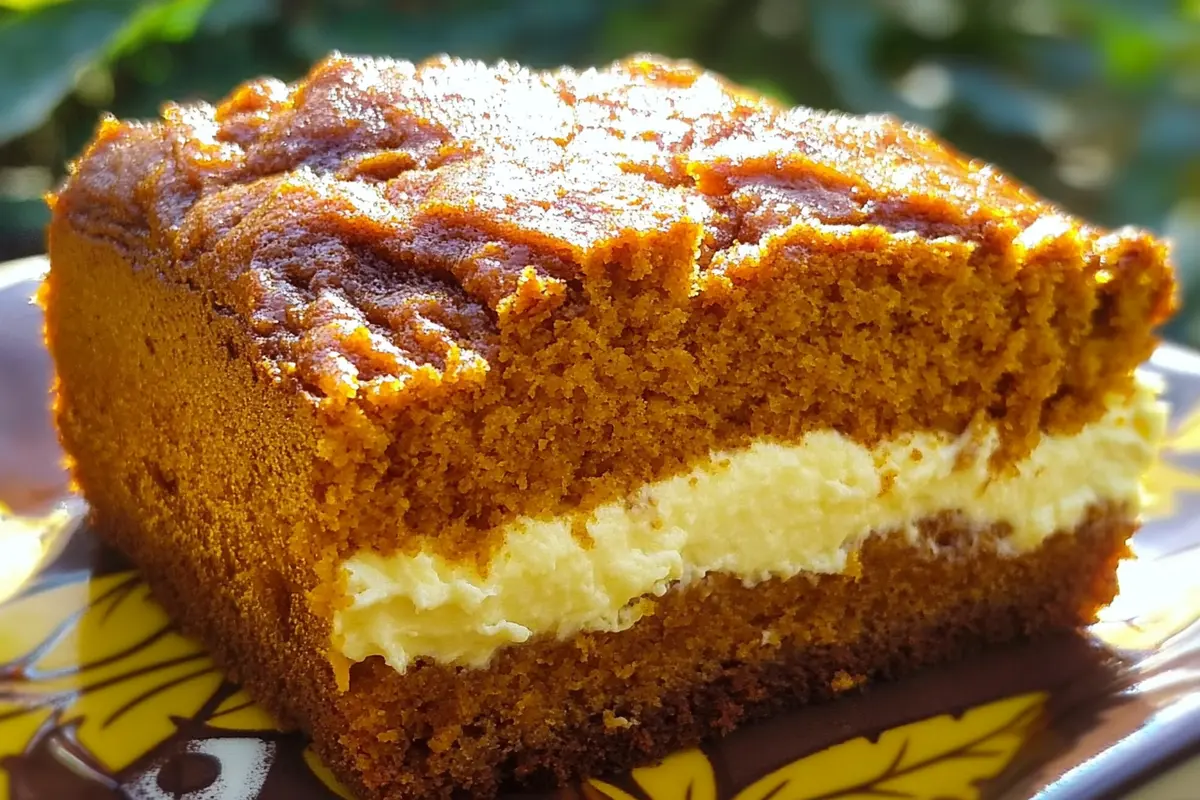Frozen burritos are an incredibly versatile meal option, loved by busy individuals and food enthusiasts alike. Because of their wide variety of flavors and convenience, they’ve become staples in kitchens around the world. In this article, we’ll explore their history, types, nutritional facts, and even how to make your own. Whether you’re curious about healthy options or ways to transform these pre-packaged delights into gourmet dishes, you’re in the right place.
Table of Contents
Introduction to Frozen Burritos
What Are Frozen Burritos?
Frozen burritos are pre-made handheld meals wrapped in a flour tortilla, filled with a mix of savory ingredients, and then frozen to preserve freshness. These convenient meals have a long shelf life, making them a favorite for quick lunches, dinners, or even snacks. Found in nearly every grocery store, they offer flavors and fillings to suit all tastes, from meat lovers to vegetarians.
The beauty of frozen burritos lies in their simplicity. Just heat them up, and they’re ready to eat. They’re perfect for people with little time to cook but still craving something warm, satisfying, and flavorful.
History and Evolution of Frozen Burritos
Burritos have a rich history steeped in Mexican tradition, but frozen burritos only emerged in the 1950s. Designed to bring the essence of traditional burritos to a wider audience, they quickly became a hit. Brands like El Monterey and Amy’s Kitchen soon began innovating recipes to cater to health-conscious consumers and diverse dietary preferences.
The evolution of frozen burritos mirrors changes in consumer habits. Once considered basic convenience food, they’ve now become gourmet, with options like gluten-free tortillas and organic fillings hitting the market. This modern-day evolution shows how these humble frozen meals have adapted to meet growing demand for both flavor and nutrition.
Types of Frozen Burritos

Traditional Meat-Based Frozen Burritos
For those who crave hearty, protein-packed meals, traditional meat-based frozen burritos are a classic choice. These burritos often feature popular fillings like seasoned beef, shredded chicken, or slow-cooked pork, paired with rice, beans, and flavorful spices. Whether you prefer smoky chipotle flavors or a mild chili seasoning, there’s something to satisfy every craving.
Brands like El Monterey and Don Miguel have perfected these savory options, offering variations ranging from spicy beef and bean burritos to cheesy chicken enchilada-style fillings. Some even go the extra mile, incorporating regional Mexican flavors such as barbacoa or carnitas.
Vegetarian and Vegan Frozen Burritos
Plant-based frozen burritos, for instance, have grown in popularity as more consumers shift toward sustainable and ethical eating habits. Furthermore, these options, filled with ingredients like black beans, lentils, quinoa, or tofu, deliver hearty nutrition without meat. Additionally, they’re often flavored with spices like cumin, smoked paprika, or cilantro to create bold, vibrant taste profiles.
Popular vegetarian and vegan brands like Amy’s Kitchen and Sweet Earth cater to diverse dietary preferences, offering burritos that are not only meat-free but also often organic, gluten-free, or dairy-free. For instance, Sweet Earth’s “Peruvian Burrito” combines quinoa, black beans, and roasted sweet potatoes for a unique twist, while Amy’s “Organic Bean & Rice Burrito” keeps it simple and satisfying.
Breakfast Frozen Burritos
Breakfast frozen burritos are an ideal way to kickstart your day, providing a warm, portable meal packed with morning staples. The fillings often include scrambled eggs, melted cheese, breakfast potatoes, and sometimes sausage or turkey bacon. Pairing these ingredients with a soft tortilla creates a comforting breakfast option that’s ready in minutes.
Brands like Evol Foods and Amy’s offer mouthwatering options for breakfast burritos. Evol’s “Sriracha Egg & Potato Burrito” delivers a spicy kick, while Amy’s “Breakfast Scramble” keeps it wholesome with organic ingredients like cage-free eggs and roasted vegetables.
Nutritional Considerations
Calorie and Macronutrient Content
Frozen burritos vary widely in calorie counts and macronutrient composition, depending on their size and ingredients. On average, a standard frozen burrito contains 300–500 calories, with larger, more filling options pushing 600 calories or more. Burritos with meat and cheese tend to be higher in fat and protein, while vegetarian options may lean toward higher carbohydrate content due to beans and rice.
For example, an Amy’s Organic Bean & Cheese Burrito provides about 310 calories, 10 grams of fat, 45 grams of carbs, and 12 grams of protein. On the other hand, El Monterey’s XXL Beef & Bean Burrito contains 640 calories, 30 grams of fat, 65 grams of carbs, and 24 grams of protein.
If you’re tracking macronutrients, pay attention to the protein content, as it varies significantly. Vegan burritos made with tofu or beans may have slightly less protein but compensate with fiber, helping you feel fuller for longer.
Sodium and Preservative Levels
One of the major downsides of frozen burritos is their sodium content. Many options contain 500–900 mg of sodium per serving, which can be problematic if you’re watching your sodium intake. Sodium is often added to enhance flavor and preserve the product, but excessive consumption may lead to high blood pressure and other health concerns.
For example, Sweet Earth’s Big Sur Breakfast Burrito contains 590 mg of sodium, while some El Monterey burritos exceed 900 mg. While these burritos may be delicious, the high sodium levels are worth noting, especially if you eat them frequently.
Preservatives like citric acid or modified food starch are commonly found in frozen burritos. These additives maintain freshness and texture during freezing but can be concerning for those seeking clean-label products. Opting for organic brands such as Amy’s or products labeled as “low sodium” can help minimize these concerns. Always read the nutrition label to ensure the burrito fits your health needs.
Healthier Frozen Burrito Options
For those seeking a healthier frozen burrito, there are plenty of options that cater to specific dietary preferences. Organic burritos, gluten-free versions, and low-sodium choices have become increasingly popular.
Amy’s Kitchen provides excellent healthier options, such as their “Light & Lean Burrito.” Containing just 220 calories, 4 grams of fat, and 470 mg of sodium, this product is ideal for calorie-conscious eaters. Meanwhile, Sweet Earth Foods focuses on creative flavor profiles, crafting burritos like the “Curry Tiger Burrito” with organic, non-GMO ingredients and a rich dose of plant-based protein.
Preparing and Enhancing Frozen Burritos
Cooking Methods: Microwave vs. Oven vs. Air Fryer
When it comes to reheating frozen burritos, the method you choose can significantly affect the texture and flavor. Each approach has its advantages, and selecting the best one often depends on how much time you have.
The microwave is the quickest option, heating a frozen burrito in just 2–3 minutes. While fast, it often results in a soft, sometimes soggy tortilla. To avoid this, wrap the burrito in a damp paper towel to prevent drying out and ensure even heating.
On the other hand, the oven offers the best texture, creating a crispy tortilla and evenly heated filling. Preheat to 375°F, wrap the burrito in foil to prevent over-browning, and bake for 20–25 minutes. While slower than the microwave, the oven ensures a firm, golden tortilla, making it worth the wait.
For a balance between speed and crispness, the air fryer has become a popular game-changer. It combines the speed of the microwave with the crispiness of the oven. Set the air fryer to 350°F, place the burrito directly in the basket, and cook for 10–12 minutes, flipping halfway through. The result? A perfectly crunchy exterior with a warm, gooey center.
Transforming Frozen Burritos into New Dishes
Burrito Casserole: Halve a few frozen burritos, arrange them neatly in a baking dish, and layer them with enchilada sauce, shredded cheese, and diced peppers. Pop it into the oven at 375°F for about 25 minutes until it’s bubbling and golden. It’s a fantastic option for meal prep or feeding a group.
Deconstructed Burrito Bowls: Transform your burritos into a fresh, carb-conscious dish. Scoop out the filling, heat it up, and serve it over rice or quinoa. Finish with toppings like guacamole, pico de gallo, and crisp lettuce for a bowl bursting with flavor.
Loaded Burrito Nachos: For a quick and indulgent snack, dice up a frozen burrito and warm the pieces. Spread them over tortilla chips and drizzle with queso. Garnish with jalapeños and a dollop of sour cream to create a shareable treat everyone will love.
Making Homemade Frozen Burritos
Benefits of Homemade Frozen Burritos
Making homemade frozen burritos is a smart choice for anyone who loves convenience without sacrificing quality. The biggest advantage? Total control over the ingredients. You can choose fresh, high-quality fillings, ensuring they align with your dietary preferences or restrictions. Whether you want organic ingredients, low-sodium options, or a gluten-free tortilla, the choice is entirely yours.
Nutritional customization is another perk. Homemade burritos allow you to adjust the macronutrient balance, add extra fiber with whole-grain tortillas, or increase protein with lean meats or plant-based alternatives. You also avoid unnecessary preservatives and excess sodium often found in store-bought versions.
Step-by-Step Guide to Preparing and Freezing Burritos

Step 1: Gather Ingredients
When choosing your fillings, start by considering your preferences. For example, popular options include cooked rice, beans, shredded chicken, ground beef, sautéed vegetables, and cheese. Additionally, don’t forget to enhance the taste with seasoning—spices like cumin, paprika, and garlic powder can truly elevate the flavor.
Step 2: Prepare the Tortillas
Warm the tortillas slightly to make them pliable. This prevents tearing when wrapping and ensures a snug roll.
Step 3: Assemble Your Burritos
Lay a tortilla flat and spread your ingredients evenly in the center. Be cautious not to overfill, as this makes wrapping difficult and increases the risk of leaks.
Step 4: Wrap Securely
Fold in the sides of the tortilla, then roll it tightly from the bottom up. A secure wrap keeps everything intact during freezing and reheating.
Step 5: Wrap for Freezing
Wrap each burrito individually in aluminum foil or plastic wrap. For extra protection against freezer burn, place the wrapped burritos in a resealable freezer bag or airtight container.
Step 6: Label and Freeze
Label your burritos with the filling type and freezing date. Store them in the freezer for up to three months.
Step 7: Reheating Instructions
When ready to eat, unwrap and reheat in the microwave (2–3 minutes), oven (20–25 minutes at 375°F), or air fryer (10–12 minutes at 350°F). Add a damp paper towel in the microwave for a soft tortilla, or use the oven/air fryer for crispness.
Recipe Ideas for Homemade Frozen Burritos
Start with a classic by combining refried beans, shredded cheddar cheese, and a sprinkle of chili powder for a bean and cheese burrito. Not only is this simple, but it’s also a satisfying recipe that’s perfect for vegetarians.
For a protein-packed option, use shredded rotisserie chicken, cooked rice, black beans, and a spoonful of salsa. Additionally, adding a pinch of cumin enhances the flavor even further.
To enjoy a breakfast twist, scramble eggs with diced bell peppers, onions, and shredded cheese. For a delicious morning option. Alternatively, for a plant-based twist, you can substitute tofu for the eggs and finish with a dollop of dairy-free sour cream.
Vegetarian Power Burrito: Mix quinoa, roasted sweet potatoes, black beans, and sautéed kale. Top with a drizzle of spicy avocado crema before rolling.
Frequently Asked Questions about Frozen Burritos
How long do frozen burritos last in the freezer?
Frozen burritos can last up to three months in the freezer if they are properly stored. To maintain quality, ensure the burritos are wrapped tightly in foil or plastic wrap and placed in an airtight container or freezer bag. Over time, freezer burn can occur, affecting the texture and flavor, so it’s best to consume them within this timeframe.
Can I cook a frozen burrito without thawing it first?
Yes, you can cook frozen burritos directly from the freezer. Most frozen burritos are designed to be reheated without thawing, making them a quick and easy meal. Simply adjust the cooking time: heat in the microwave for 2–4 minutes, bake in the oven for 20–25 minutes at 375°F, or air fry for 10–12 minutes at 350°F. Always check that the internal temperature reaches at least 165°F for food safety.
Are there gluten-free frozen burrito options available?
Absolutely! Many brands cater to dietary restrictions, including gluten-free options. Gluten-free frozen burritos are made with alternative flours, such as corn, rice, or cassava flour tortillas. Brands like Amy’s Kitchen and Udi’s offer delicious gluten-free burritos, ensuring that everyone can enjoy this convenient meal without compromising their diet.
How can I prevent a frozen burrito from becoming soggy when reheating?
To avoid soggy burritos, skip the microwave and opt for an oven or air fryer. The oven and air fryer help maintain or create a crispy tortilla. If using a microwave is your only option, wrap the burrito in a damp paper towel while reheating. This keeps the tortilla soft but avoids the overly steamed, soggy texture.
What are some low-sodium frozen burrito brands?
Several brands, such as Amy’s Kitchen and Evol Foods, offer low-sodium frozen burritos. These brands focus on healthier ingredients while maintaining great taste. For example, Amy’s “Light in Sodium” burritos provide flavor with significantly reduced sodium content. Always check the nutritional label, as sodium levels can vary greatly even within the same brand.
Can I refreeze a frozen burrito after cooking it?
No, refreezing cooked frozen burritos is not recommended. Refreezing can lead to textural changes, such as a dry or mushy filling, and may compromise food safety. It’s best to only heat what you plan to eat to avoid waste.
Print
The Ultimate Guide to Frozen Burritos: Types, Tips, and Recipes
- Total Time: 30 minutes
- Yield: 6 burritos
- Diet: Vegetarian
Ingredients
For the Filling:
- Cooked white or brown rice (1 cup)
- Black beans, drained and rinsed (1 cup)
- Shredded cheddar or Monterey Jack cheese (1 cup)
- Sautéed bell peppers (any color, diced) (1 cup)
- Sautéed onions, diced (1 cup)
- Diced tomatoes (or pico de Gallo) (1 cup)
- Chopped fresh cilantro (½ cup)
- 1 teaspoon ground cumin
- 1 teaspoon chili powder
- ½ teaspoon salt (adjust to taste)
- ½ teaspoon black pepper
For the Tortillas:
- 6 large flour tortillas (10–12 inches wide, burrito-sized)
Optional Add-Ins:
- Cooked shredded chicken or ground beef for extra protein
- Scrambled eggs for a breakfast burrito twist
- Avocado slices or guacamole for creaminess
- A drizzle of hot sauce for extra spice
Instructions
1: Prepare the Ingredients
- Cook the rice according to package instructions and let it cool slightly.
- Sauté the vegetables – Heat a skillet over medium heat, add a drizzle of oil, and cook the diced bell peppers and onions until softened (about 5 minutes).
- Combine the filling – In a large bowl, mix the cooked rice, black beans, sautéed vegetables, tomatoes, cilantro, and spices. Stir well to evenly distribute the flavors.
2: Warm the Tortillas
- Heat each tortilla in a dry skillet for about 10 seconds per side or microwave them for 15–20 seconds to make them more flexible. This prevents cracking when wrapping.
3: Assemble the Burritos
- Lay a tortilla flat on a clean surface.
- Scoop about ½ cup of the filling mixture into the center. If adding meat or eggs, layer them on top of the filling.
- Fold the sides inward, then roll the burrito tightly from the bottom up, making sure the filling is secure.
4: Wrap for Freezing
- Wrap each burrito individually in aluminum foil or parchment paper to prevent freezer burn.
- Place them in a resealable freezer bag or airtight container. Label with the date and type of burrito.
Notes
💡 Store the burritos in a single layer for better freezing. If stacking them, place parchment paper between layers to prevent sticking.
- Prep Time: 20 minutes
- Cook Time: 10 minutes (for filling preparation)
- Category: Main Course
- Method: Assembly and Freezing
- Cuisine: Mexican-Inspired




